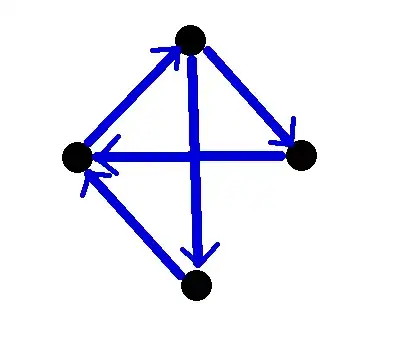I was recently involved in a debate with a friend over the following graph, and whether it is ergodic or not. In the following diagram, each edge has a strictly positive probability of being travelled on:

I thought it was ergodic because of the definition from this source, which said that a Markov Chain is ergodic if "if it is possible to eventually get from every state to every other state with positive probability", which is clearly the case here.
However, my friend quoted Wikipedia, alleging that the Markov Chain in question is not ergodic, because it is periodic: he said that all cycles have lengths that are multiples of three.
Who is right, and who is wrong, and why?